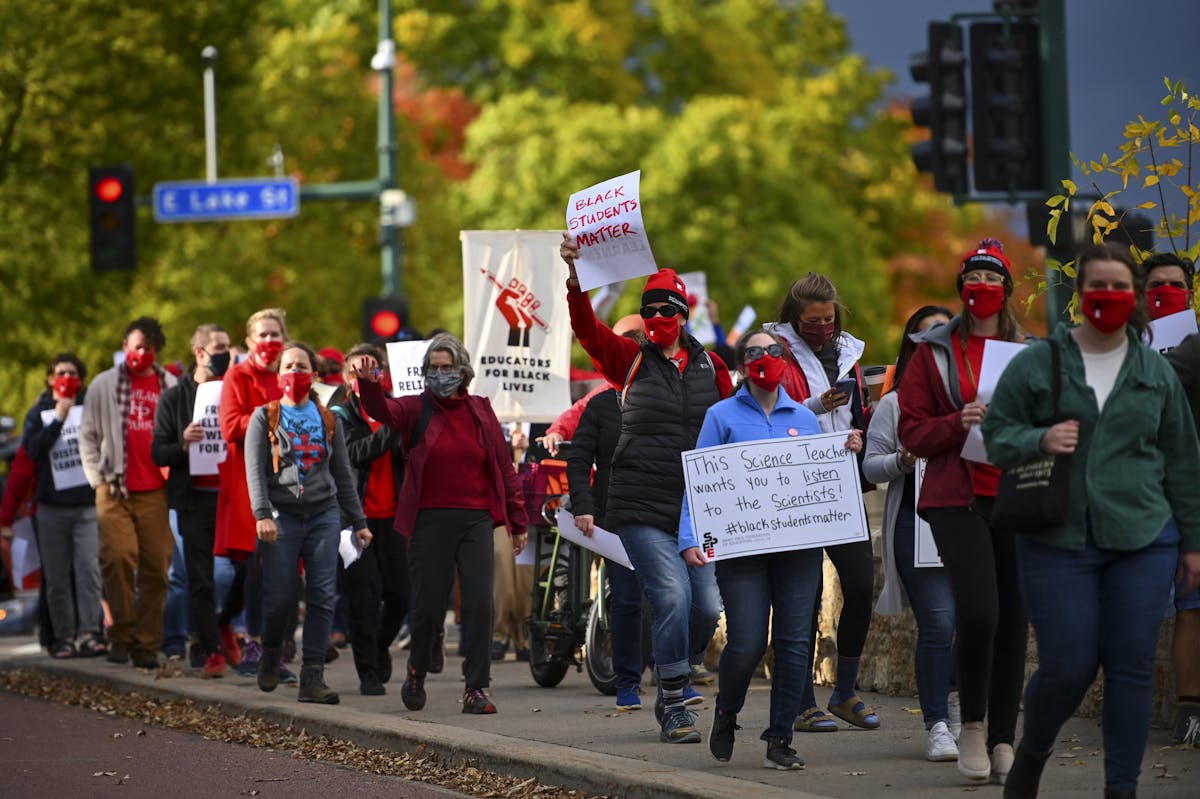Not so long ago, school lunch meant a line in a cafeteria, students waiting their turns with trays in hand.
But this fall, Minnesota schools are cooking up something far more complicated. Meals are now served to students spread out in socially distanced classrooms, packaged up for curbside pickup and delivered — sometimes by school bus — to students' homes. There are new considerations, like which foods can stay fresh for students who pick up a week's worth of meals, and which menu items can be easily prepared by students at home, even if they don't have a parent's help or access to an oven.
In the COVID-19 era, school nutrition programs are running increasingly complex operations, filling a critical need for families facing disruptions to their schedules, health and finances. Nearly eight months into the pandemic, school leaders say they've learned to adapt and reach students whenever and wherever they are participating in school.
"We could always be feeding more students, but we know we are reaching a lot of them — especially the ones that need it the most," said Maria Anderson, nutrition services coordinator for Roseville Area Schools.
Especially in schools using the hybrid instruction model, feeding students requires managing an unusual and ever-changing calendar.
Take Richfield Public Schools, where the school year began with kindergartners, first- and second-graders in school four days a week, older elementary students in the building two days a week and secondary students at school once a week, on alternating days. Warm meals had to be ready for each student in the building, plus a package of food to-go to cover them through distance learning days at home. Meanwhile, students who opted for distance-learning need meals they can eat at home for every day of the week.
"It was a very tough schedule," said Michael Manning, the district's director of nutrition services.
More recently, Richfield added more in-person days for third-, fourth- and fifth-graders, making the meal calculations slightly less complicated.
Anderson, who oversees meal programs in Roseville, also supervises nutrition operations in the St. Anthony-New Brighton school district and for a few private schools. Each is operating under a different learning model, requiring different meal preparation and distribution.
The districts provide meals for curbside pickup at school buildings and other sites, with options available both during the day and in the evenings. More than 800 students get their meals delivered directly to their homes. Everything is served in a bundle with five days' worth of breakfast, lunch and snack items, all ready to eat with minimal preparation. Anything that needs to be heated comes packaged in a microwaveable container.
"The lunch items we made sure are our kiddos' favorites, but also foods we can easily prepare ourselves," Anderson said.
The menu is varied — Anderson said favorites include brown rice with mandarin orange chicken and edamame, chicken alfredo pasta and macaroni and cheese — but is often a departure from what schools were able to offer pre-pandemic. Many, including Roseville, had been emphasizing scratch cooking with local ingredients but now lack the time to experiment with new recipes.
"Right now feeding kids safe, high-quality foods is most important," Anderson said.
Feeding kids and families
All of the meals schools serve this fall are free to all students, regardless of income level — a shift from typical practice. Because of the challenges of operating schools and feeding students in the pandemic, the U.S. Department of Agriculture extended the summer meal program that provides free meals into the school year.
Daron Korte, assistant commissioner with the Minnesota Department of Education, said that flexibility has helped schools avoid a feared drop in school-lunch funding, especially in districts primarily in distance learning.
"We are thrilled with the extension of the summer food program," he said.
Under the program, districts can provide food to any families with children, whether they attend school in the district or elsewhere. So far, Korte said that hasn't been a budgetary problem; the federal government reimburses schools at a higher rate under the summer meal program because of the additional costs of packaging and distribution, and only a few have reported their costs outpacing the reimbursement.
But that change presents other challenges for districts. Because meals are free to all, some schools have had a harder time getting parents who would usually qualify for free or reduced-price lunch to fill out paperwork for that benefit. Without it, schools don't have an accurate count of students in need — a measure used to allocate state funding and to distribute some federal money.
Schools are leaning on last year's records to keep track of students who previously qualified to ensure they're getting meals, as well as enlisting social workers and other staff members to identify other students who need meals most.
Some districts are also expanding their reach to ensure other family members won't go hungry. In Roseville, the school district is working with the nonprofit Second Harvest Heartland to provide family-style meals for the weekend in a program they call Roseville Family Table. The program is providing the meals, including some designed for culturally specific groups, to more than 400 families each week.
Theresa McCormick, director of programs for Second Harvest Heartland, said in tough times, the meals provided by schools are critical for many families, including some that hadn't needed the help until the pandemic hit. She said families looking for help should download an app called Free Meals for Kids, which provides information on school meals and other resources across Minnesota.
"We're still seeing that families are being stretched very thin right now … having access to those meals can be the difference, can be that lifeline," she said.
Carolyn Parnell, 'trailblazer' who served as Minnesota's first IT commissioner, dies


